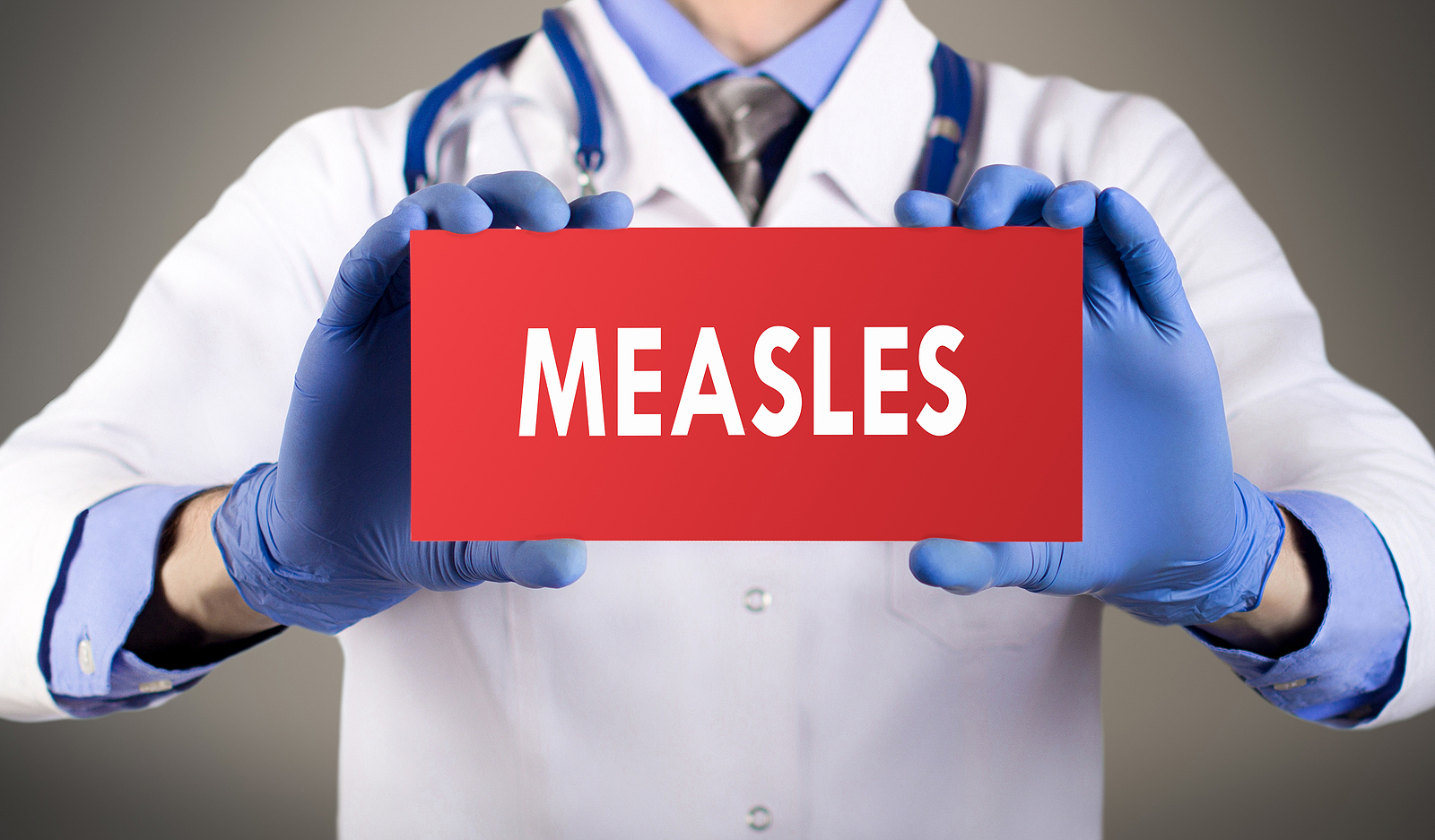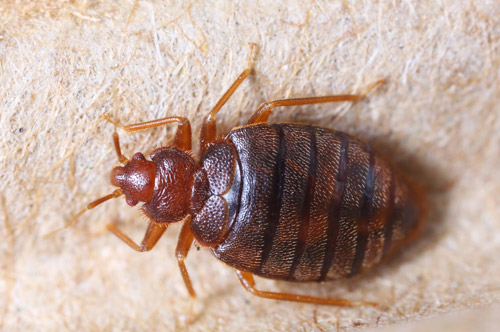Bed Bugs
Bed Bugs
Tom Barsa, REHS
Sanitarian
216.201.2000 ext. 1264
tbarsa@ccbh.net
Joe Lynch MPH, REHS
Program Manager
216.201.2000 ext. 1241
jlynch@ccbh.net
Bed bugs are small, flat, oval, reddish brown, wingless insects that feed on the blood of humans and other mammals. Adult bed bugs are approximately 1/4 inch in length, about the size of an apple seed. A female bed bugs can lay up to five eggs at a time and five hundred during her lifetime. A bed bug can live up to 12 months without a blood meal. Since bed bugs are mostly active at night, frequent daytime sightings in a residence may indicate a heavy infestation.
Where Do Bed Bugs Come From?
Bed bugs are excellent hitchhikers and are easily spread by moving beds, furniture, luggage, clothes, or other possessions from one location to another. Anyone who comes into contact with bed bugs or their eggs can unknowingly carry them into their home or workplace. Infestations are not tied to unsanitary living conditions; even world-class hotels have reported bed bug problems.
Do Bed Bugs Transmit Disease?
Bed bugs are primarily a nuisance to humans and are not known to transmit disease. However, infestations can cause severe psychological and emotional stress. Bites can cause welts which may become infected by excessive scratching.
Where Do I Look For Bed Bugs?
Check for bed bugs or eggs on the seams, tufts, or folds of furniture, mattresses, on bed frames and behind head boards. Bed bugs or eggs may also be found behind baseboards, pictures, windows, door casings, loose wall paper, drapery, cracks in plaster, behind electrical wall plates, and even in electronic devices, like televisions, phones and radios. They do typically prefer fabric, wood and paper surfaces over plastic or metal.
How Do I Know If I Have Bed Bugs?
Usually, the first sign of a bed bug infestation is the appearance of small black or rusty spots on your mattresses and bed linens. These are bed bug droppings and blood spots.
Bed bugs feed on any bare skin exposed while sleeping. Red itchy welts are an indication of an infestation. Bed bug “bites” occur when the bed bug is actually drawing blood. It may take several days for a welt to appear from a bed bug bite. Since approximately 30% of the population has no reaction to bed bug bites, identifying a potential infestation is more difficult.
The infected person should resist the urge to scratch the bites, as this may intensify the itching and cause an infection. Some people have adverse reactions to bed bug bites and may need to seek medical assistance.
How Can I Get Rid of Bed Bugs?
Complete elimination of a bed bug infestation may be difficult without the services of a knowledgeable licensed pest control operator. It may take numerous treatments to gain control of an infestation. Pesticides labeled for use against bed bugs are available over the counter and may provide effective control. Remember to carefully follow all directions on pesticide labels. Do-it-yourself measures used by homeowners and renters sometimes cause more problems than benefits.
Although directly spraying bed bugs with diluted rubbing alcohol can kill them, DO NOT spray alcohol on any absorbent item, such as clothing, drapery or bedding, or on any item or area that may be near an open flame. You should also never use bleach in areas you have treated with a pesticide. Bleach can convert some pesticides into more toxic forms that could result in a harmful exposure to your family.
An extensive heat treatment of your home or apartment may be necessary if numerous rooms or parts of the dwelling are infested.
Bed bugs are best treated using a combination of practices, including inspection, monitoring, reducing clutter, using physical barriers, and carefully applying pesticides if needed.
Integrated Pest Management (IPM)
- Eliminating clutter throughout the dwelling to help reduce the number of bed bug hiding places
- Thoroughly inspecting your dwelling, especially areas thought to be infested
- Vacuuming mattresses, box springs and carpets thoroughly and then disposing of vacuumed contents in a sealed plastic bag
- Washing bedding and garments on the highest recommended setting and drying them on a hot setting (at least 120 degrees Fahrenheit) for at least 30 minutes
- Covering your mattress, box spring and pillows with zippered covers, or encasements, that are labeled “allergen rated”, “for dust mites”, or “for bed bugs” for at least one full year
- Utilizing traps or interceptors under bed posts and furniture legs to help identify the extent of the infestation and to prevent bed bug movement between the floor and the bed or furniture
- Closely checking your luggage, clothes and other belongings when returning from a trip or after buying second hand clothing, mattresses, furniture, etc
- Carefully using pesticides labeled and approved for indoor use on bed bugs
How Can I Prevent Bed Bugs?
- Do not bring discarded bed frames, mattresses, box springs or upholstered furniture into your home
- Carefully inspect used or rented furniture prior to bringing it home
- Keep your clothes hung up and in zippered clothing bags
- When traveling, inspect the bed and furniture upon arrival
- Keep suitcases off the floor and bed, and inspect them again before you leave
- Store your belongings in clear storage bags or containers
- Wash and dry all clothing thoroughly when you return home
- Caulk and seal any cracks and crevices throughout your home
When Treating For Bed Bugs, How Can I Prevent Exposure to Pesticides?
- Make sure you are treating for the right pest, since some products are effective on specific insects and may not work on others
- Do not use pesticides indoors if they are intended for outdoor use – read the carefully
- Use an experienced professional pest control expert if you do choose to hire someone to treat your home
- Always follow the instructions on the label. The label tells you what bugs the product will kill, how to mix the product, and where and how to apply it – more is not better!
If you believe you or a family member has become ill from a pesticide exposure
Poison Control Center at 1.800.222.1222 or your local hospital emergency room
National Pesticide Information Center
1.800.858.7378 or the Centers for Disease Control and Prevention Information Line at 1-800-CDC-INFO.
If you believe your pet has become ill from a pesticide exposure
Contact your local veterinarian or call the National Animal Poison Control Center at 1.888.426.4435
To report the possible misuse of a pesticide in the State of Ohio
Ohio Department of Agriculture at 1-800-282-1955




